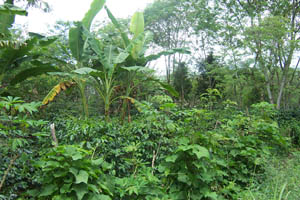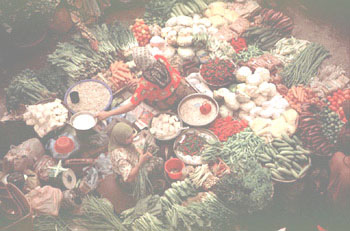Current & Traditional Use informing prototypical design




Current & Traditional Use informing prototypical design
|
| street as scaffolding | private enclosed | semi inclusive| inclusive network | home |
| After identifying three core cultural elements of mosque, agricultural space, and the tradition of boarding schools, I found my inspiration. Recognizing the traditional system of boarding school as often the organizer of children's health and education in Aceh, these 'boarding school' prototypes work to incorporate both mosque and agricultural space in ways which support and encourage children's interaction and connection with their outlying communities. In an attempt to spark the re-growth of vital social connections they have lost. Addressing my lack of cultural and traditional knowledge, as well as no knowledge of site conditions, my scope has been broadened to incorporate different levels of privacy and inclusivity, as well as identifying ways in which past street patterns may be used. In doing this I hope to provide adequate flexibility for differing cultural standards. These prototypes should not be read as definitive plans, but rather, as prototypical ideas which may inspire the design of 'community centered' boarding schools for those children who have lost both family and community. |
|
| Mosque. From the times of rich trading industry to the west, which spread the faith of Islam to Sumatra, the mosque remains an integral part of Aceh culture. Known as one of the most devout regions within indonesia, people live based on the local tradition of Adat. A term of Arabic origin, loosely meaning 'customs or customary law'. Life is focused on family, community and religion. The mosque is an important place to engage in social activities. Chidren learn the tradition of daily prayer, in which five prayer sessions are called, before sunrise, at noon, late afternoon, before sunset and early night. In the aftermath of the Tsunami disaster, many mosque structures survived in areas demolished. They have grown to symbolize the resilience and faith of those suffering from the tragedy, many now serve as relief camps and centers. |
 |
Agricultural space. |
 |
| Boarding school. A tradition of sending children away for their education after primary school exists within Aceh. Many schools exist near, or with a mosque. Islam remains a strong aspect of the children's education, and many private Islamic boarding schools exist called 'pesantren'. Along with their religious/academic study children may also often participate in art, cooking and gardening. Many schools adopt agricultural activity, as a means to gain self sufficiency and to provide more activity for the children. Schools are acting as sanctuaries and homes for those children left orphaned by the tsunami, over 450 Aceh pesantren have taken children in. |
 |
|